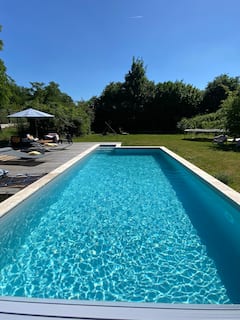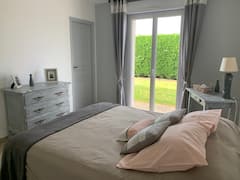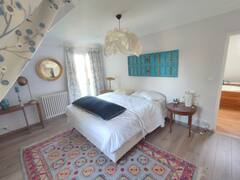Quick! What comes to mind when someone mentions French history? It’s probably safe to bet that castles and royalty were among the first ideas that came to mind. This makes sense given the incredible power of the monarchy before the French Revolution in 1789. During a period of several centuries, at least 30,000 castles were built by French nobility, if not more. A handful are located near Paris, some can be found in southeastern France near Bordeaux, but the majority of France’s castles are located in the Loire Valley. It is also here that you will find some of the most beautiful castles, among them Cheverny, Blois, and Chenonceau.
The Loire Valley: home of history, castles, and great food

The Loire Valley region is located in central France and spans about 800 square kilometers (310 square miles). Major towns in the region include Orléans and Tours, both of which are located less than an hour from Paris on high speed train. This region is best known for castles, counting over 70 along the Loire River and its tributaries. It is also famous for its fruit orchards and vineyards, which benefit from the region’s fertile soil.
The large number of castles in this area can be explained by briefly examining France’s history. Before the 16th century, the royal power was located in the Loire region. This explains the presence of some of the older castles. In the middle of the same century, King François I moved his court to Paris, however, many royals preferred to stay in the Loire area. The construction of Versailles by King Louis XIV cemented Paris as the location of royal power, but rich nobles and members of the bourgeois class still preferred the Loire Valley. They renovated existing castles in the region and continued to build new ones, using them especially for summer homes. This area was truly ideal for getaways because it offered a warmer climate than Paris, but was still very near to the capital in case of emergencies.
Unfortunately, many of the castles were destroyed during the French Revolution in the 18th century. Additionally, many were taken over by military units during the Great Wars. Today, these castles serve a variety of purposes. Some are private homes, others are hotels, and the rest are open as monuments to the general public.
Chateau de Blois

This castle traces its origins backs to the 9th century and claims its fame thanks to its varied and numerous former residents. More than ten counts of Blois and three dukes of Orleans have lived in the castle. In addition, during the Renaissance, seven kings and ten queens spent time in the castle including Henry IV and Catherine de Medici. In addition, this is where Joan of Arc came in 1429 to be blessed by the Archbishop of Reims before embarking on her journey to expel the English from Orleans.
However, it is the castle’s architecture that makes it both unique and famous. In addition to a well-preserved Medieval tower, visitors standing in the central courtyard are able to notice four distinct building styles ranging from Gothic to Renaissance to Classical. This is an incredibly unique opportunity to compare the four major periods of French architecture at one time.
Chateau of Cheverny

This castle was built between 1624 and 1630 by the sculptor and architect of the Blois Castle. In addition, many features of the castle resemble those of the Palais du Luxembourg (Luxembourg Palais) in Paris where the French senate convenes. Ownership of the castle changed countless times between its construction and its first major renovation in 1768. The original owners of the castle, the Hurault family, were forced to sell the property in 1802 in order to pay off debts that emerged during the Revolution. When the aristocracy resurged in the early 19th century, the family bought the castle back.
In 1922, the castle’s owner opened the doors to the public, becoming one of the first castles to do so. Over 100 years later, the same family still owns and operates the grounds. This castle is known from its luxurious interiors that highlight the royal style of living, its beautiful and expansive gardens, and its 70 hunting dogs. In addition, it is interesting to note that this castle was the inspiration for Marlinspike Hall, the residence of Captain Haddock in the Tintin comics.
You might be interested in these Airbnbs!
Chateau de Chenonceau

This castle is one of the best-known in the Loire Valley region. As proof, besides Versailles, it is the most visited castle in all of France. Upon examination, it’s easy to see why. Its unique design is possibly the most striking visual element. The castle as we know it today was constructed between 1514 and 1522 on the foundations of an old mill in late Gothic and early Renaissance styles. Later it was expanded to span the Cher River, creating the effect that the castle is floating.
Chenonceau is also renowned because of its administrators and caretakers, all women for the most part. The first intervention by the part of women was by Katherine Briçonnet, the wife of a French Chamberlain who bought the castle in 1513. Briçonnet was responsible for overseeing new construction on the castle and hosting lavish receptions for visiting kings. The castle was seized by King Français I in 1547 due to unpaid debts to the crown. After the king’s death, Henry II offered the building to his mistress, Diane de Poitiers. She was the unofficial mistress of the castle for many years, but gained full possession of it in 1555. Following Henry II’s death, his widow, Catherine de Medici, reclaimed the castle for herself. The castle was spared during the French Revolution thanks to Louise Dupin, the wife of a wealthy squire. She noted that it would be unwise to destroy the castle seeing as it was the only bridge for many miles.
Around the castle find carefully tended gardens, donkeys in the donkey park, and a play area for kids. Inside the castle, you’ll find a chapel, offices, and royal bedrooms all pristinely decorated. In the basement, tour the kitchen, the storeroom, and the staff dining room. Getting insight into the daily life of the castle staff is a very unique opportunity not often available when visiting castles.
A truly royal outing awaits you
The Loire Valley region is rich with history and culture and certainly merits a few days to really enjoy the castle visits. Plan a couple of hours for each visit, but don’t try to visit more than three in a day or you’ll get overwhelmed. Better to visit slowly, take some great pictures, and finish the day off with a nice glass of wine in true French style. These three castles can be reached on public transportation from Paris if you want to do a self-guided trip, however, booking a bus tour from Paris with a tour company is the easiest and most economical option.
History
Get Trip101 in your inbox
Unsubscribe in one click. See our Privacy Policy for more information on how we use your data





















Create an account to